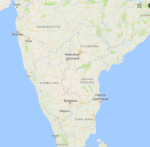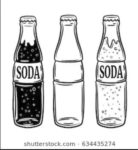Tired of Boring Low-Caf or Decaf? Exciting New Option!

Coming up in January, we will be adding a tasty new option especially for low-caf/decaf drinkers: Monsooned Malabar coffee! If you have never tried monsooned coffee, this could rock your coffee world (or be truly not your cup of tea, so to speak.) Intrigued? Read on.
India has coffee?? India has been producing ” Indo” type coffees from Typica varietals for about 350 years, but we in North America hardly ever get to try it. Generally, Indian coffee is produced in Karnataka or Mysore areas and tastes a bit like a Sumatra with a bit more smoke or pepper notes. Roasted fairly dark, it can be very smooth and slightly less rustic than the Sumatras. (We offer these Indian coffees on our Single Origin page when we can get really nice examples of this origin.)
Monsooned coffee?? We all know that India has a monsoon season. What is less well-known is that dried unroasted coffee beans sitting in storage start soaking up all the excess moisture in the very warm air, and it can either be a disaster or a strange blessing for the coffee producer, depending on how that “Monsooning” process is managed. As the beans absorb humidity, they lose color and puff up (leading to the nickname, Zombie Bean.) They also absorb surrounding odors and flavor notes that evoke, well, India. Monsooned beans are then re-dried and shipped in bags that preserve the funky, spicy flavors. Sorted, roasted darker and cupped again before it comes to you, Monsooned Malabar is super-rustic to the point of being somewhat funky in taste profile and extremely creamy in body. You either love it or hate it, but it is certainly different, exotic and not boring.
Here’s what we are thinking in terms of options for our customers:
1) Smaller quantities/samples: If you are worried about not liking monsooned coffee (low/no/full caf), we have you covered. To reduce your risk, we will offer monsooned coffee for sale in 8oz bags, or we can send a smaller sample of the same for free along with another purchase if you drop us a note and ask.
2) Espresso option: We have been playing around with adding it to a second espresso blend that is truly exotic, has no robusta (still) and will give low/no caf drinkers massive flavor and crema. We will also offer it in full-caf for the truly adventurous.
Look for these new options to join the menu in January, and please feel free to email us if you have questions or want to know more.
Enjoy your coffee!
s




